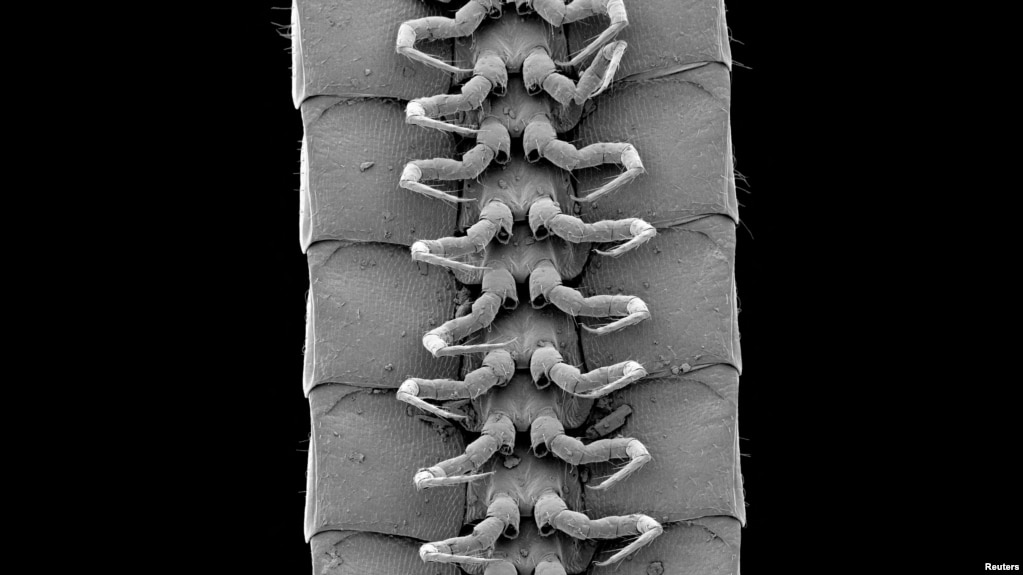Scientists Find First ‘True Millipede’ in Australia

Scientists drilled a small, deep hole in the Goldfields-Esperance area of Western Australia and found a true millipede.
The word millipede means “a thousand feet,” but until now, no insect had ever been found with that many legs, or feet.
The millipede in Australia had 1,306 legs.
The scientists are calling it Eumillipes persephone.
Paul Marek studies insects for Virginia Tech University. He is the lead author of a study recently published in Scientific Reports.
Marek’s co-writer is Bruno Buzatto, a biologist in Perth, Australia. He called the discovery a “stunning animal, a marvel of evolution.”
The name means “true thousand feet” and uses the name of Persephone, the queen of the underworld in Greek mythology.
The scientists said one of the females had 1,306 legs. Another had 998. The males did not have as many legs. Scientists said the number of legs is not always the same because the insects molt, which means to lose their outer layer as they grow. They add more legs throughout their lives.
The writers said the insects need all the legs to move through small openings in the deep soil. They live about 60 meters underground and are about 95 millimeters long with a width of less than 1 millimeter.
Until now, the longest-known millipede was from California. It had 750 legs.
Buzatto said the insect comes from a “harsh,” dry area in Australia where it is hard to find any millipedes on the surface.
The millipedes do not have eyes. Instead they use touch and smell to move through their environment. They come from a species of insects that eat fungi.
The Goldfields-Esperance area in Australia is known for mining the metals gold, lithium and vanadium.
Scientists say millipedes first appeared 400 million years ago.
There are about 13,000 species known.
The insects play a key role in their environments by eating plants and fungi. They leave behind sugar, carbon and nitrogen.
“These nutrients can then be used by future generations of life,” Marek said.
Words in This Story
drill - v. to make a hole in something with a drill (a tool used for making holes in hard substances)
author - n. a person who has written something
stunning – adj. ideas that are believed by many people but that are not true
mythology – n. ideas that are believed by many people but that are not true
harsh – adj. severe or cruel : not kind, unpleasant
marvel – n. someone or something that is extremely good, skillful, etc. : a wonderful or marvelous person or thing
fungi – n. (plural of fungus) any one of a group of living things (such as molds, mushrooms, or yeasts) that often look like plants but have no flowers and that live on dead or decaying things
role - n. a part that someone or something has in a particular activity or situation